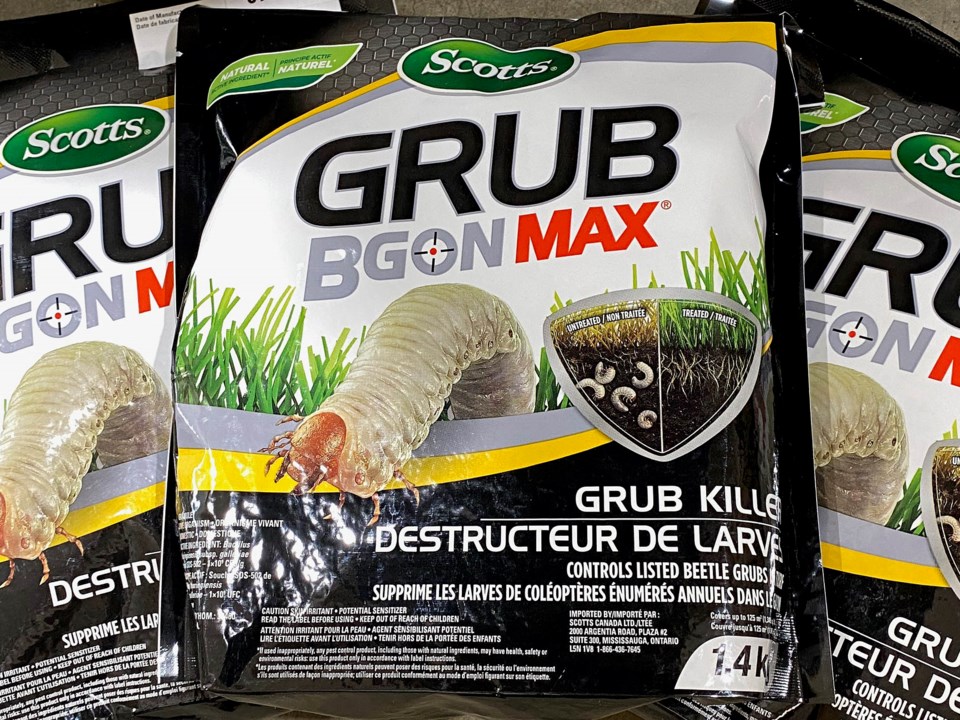Many lawns, all throughout the Lower Mainland and into the Fraser Valley, look terrible at the moment, and probably many more will look even worse as we move into the warmer spring weather.
Most folks are not quite sure what to do to fix the problem, and as a result, more neighbourhoods are being affected.
The problem is triggered by a grub issue in the soil.
Adult beetles lay their eggs in the soil from mid-summer into fall. These eggs slowly hatch during the winter months and the grubs feed on the grass roots. The real damage, however, is caused by wildlife, like racoons and crows, digging up the turf to find those tasty grubs.
To prevent grub predators from digging up your lawn, it is necessary to place poultry wire netting over your lawn area. When secured in place, the poultry wire works well to keep grub predators at bay and your lawn in good shape. Once the grubs pupate into their next life cycle, the immediate problem is over.
In late May, adult beetles move out into the garden, feeding on flowers, foliage and fruit. At the later part of July, they lay their eggs in the soil and in late September and October the eggs hatch to feed on grass roots.
Shelley Vance, a local Scott’s Canada representative, has been providing seminars on effective grub control. She says people are having great success by applying Scott’s ‘Grub B Gon Max’ in both late July and August. The bacteria in this product has been very effective in controlling the eggs and the grubs, and it has worked well on the European Chafer, Green June beetle and the Japanese beetle. Working with her neighbours in Coquitlam, she has helped these folks get back to having beautiful green lawns that are relatively grub free.
These steps should help you enjoy an attractive lawn this summer, but you will have to again apply Scott’s ‘Grub B Gon Max’ in mid to late July and once more in mid to late August in order to control any grubs that may be laid in your lawn in late summer. These important applications will help keep your lawn relatively grub free. This process has worked well in many other locales, giving us confidence in its effectiveness in helping achieve a long-term, grub-free lawn.
For lawns which have been dug up or destroyed, mid-April is an ideal time to refurbish your lawn. Perhaps the easiest and best way to fix your lawn is to rototill the whole area, work in some well-draining soil and then seed with a grub-resistant grass seed mix. These seed blends are available and are reasonably effective to help minimize the grub challenges in your lawn.
Even though many lawns look terrible, it is best to wait for warmer, drier weather before trying to get them back in shape. Dry soils are so much easier to work with to quickly bring your lawn back into shape. If you decide to seed, the grub-resistant mix will take, depending on the weather, 10 to 14 days to germinate. You could also choose the option of using turf for a more instant repair.
To control any remaining grubs that may still be in your soil, once we get continuous daytime temperatures of ten degrees Celsius, apply Scott’s ‘Grub B Gon Max’ which contains a very effective bacteria to control these grubs.
If you see any further evidence of grub predation, immediately cover your lawn with pliable poultry wire to protect your lawn from being dug up. After all the difficulties of dealing with lawns that look like battlefields, it’s reassuring to know that there is an effective way of handling this grub challenge.






